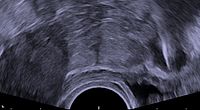
Photo from wikipedia
The emerging insensitive munitions compound (IMC) 3-nitro-1,2,4-triazole-5-one (NTO) is currently being used to replace conventional explosives such as 1,3,5-trinitro-1,3,5-triazacyclohexane (RDX), but the environmental fate of this increasingly widespread IMC remains… Click to show full abstract
The emerging insensitive munitions compound (IMC) 3-nitro-1,2,4-triazole-5-one (NTO) is currently being used to replace conventional explosives such as 1,3,5-trinitro-1,3,5-triazacyclohexane (RDX), but the environmental fate of this increasingly widespread IMC remains poorly understood. Upon release from unexploded solid phase ordinances, NTO exhibits high aqueous solubility and, hence, potential mobilization to groundwater. Adsorption and abiotic transformation at metal oxide surfaces are possible mechanisms for natural attenuation. Here, the reactions at ferrihydrite and birnessite surfaces of NTO and its biotransformation product, 3-amino-1, 2, 4-triazol-5-one (ATO), were studied in stirred batch reactor systems at controlled pH (7.0). The study was carried out at metal oxide solid to solution ratios (SSR) of 0.15, 1.5 and 15 g kg-1. The samples were collected at various time intervals up to 3 h after reaction initiation, and analyzed using HPLC with photodiode array and mass spectrometric detection. We found no detectable adsorption or transformation of NTO upon reaction with birnessite, whereas ATO was highly susceptible to oxidation by the same mineral, showing nearly complete transformation within 5 min at 15 g kg-1 SSR to urea, CO2(g) and N2(g). The mean surface-area-normalized pseudo-first order rate constant (k) for ATO oxidation by birnessite across all SSRs was 0.05 ± 0.022 h-1 m-2, and oxidation kinetics were independent of dissolved O2 concentration. Both NTO and ATO were resistant to oxidation by ferrihydrite. However, NTO showed partial removal from solution upon reaction with ferrihydrite at 0.15 and 1.5 g kg-1 SSR and complete loss at 15 g kg-1 SSR due to strong adsorption. Conversely, ATO adsorption to ferrihydrite was much weaker than that measured for NTO.
Journal Title: Environmental pollution
Year Published: 2018
Link to full text (if available)
Share on Social Media: Sign Up to like & get
recommendations!